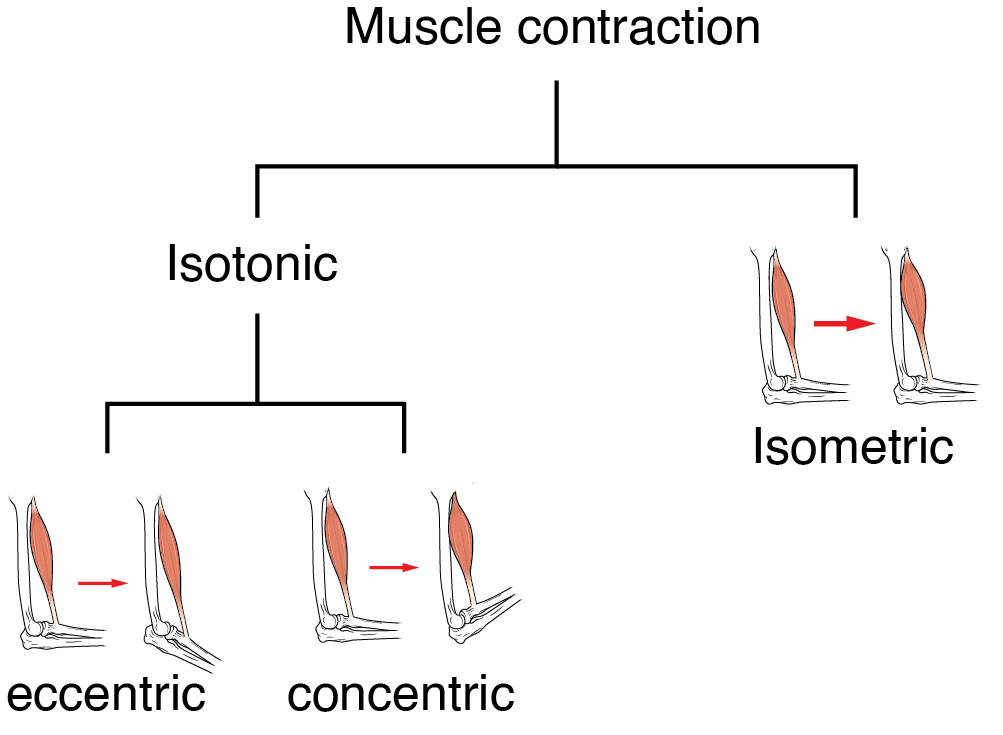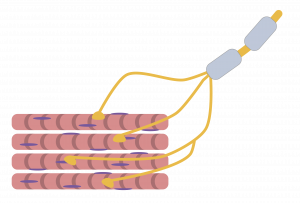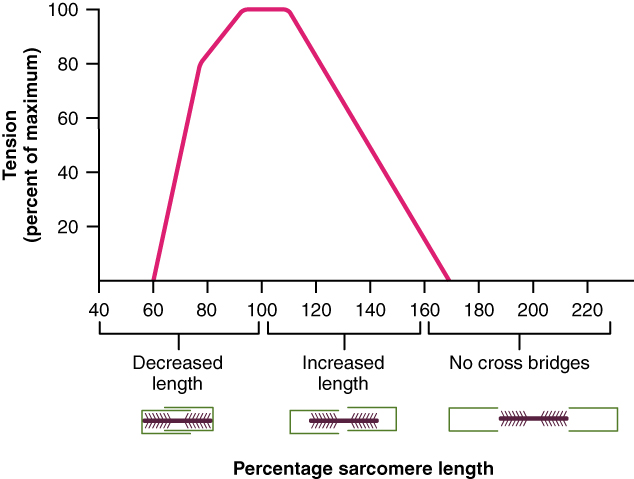
To move an object, referred to as a load, the muscle fibers of a skeletal muscle must shorten. The force generated by a contracting muscle is called muscle tension. Muscle tension can also be generated when the muscle is contracting against a load that does not move, resulting in two main types of skeletal muscle contractions: isotonic contractions and isometric contractions (Figure 39.1).

In isotonic contractions, where the tension in the muscle stays relatively constant, a load is moved as the length of the muscle changes. A concentric contraction involves the muscle producing tension and shortening to move a load. An example of this is the contraction of the biceps brachii muscle when a hand weight is brought upward toward the body. An eccentric contraction occurs when the muscle tension produced is less than the load and a muscle lengthens while under tension. This type of contraction is observed when the same hand weight is lowered in a slow and controlled manner by the biceps brachii. Both concentric and eccentric contractions involve force production by the muscle and cross-bridge cycling with the myosin heads pulling toward the M-line. The only difference between the two is whether the muscle length is shortening or elongating during the contraction.

An isometric contraction occurs when a muscle produces tension without a change in muscle length. Isometric contractions involve sarcomere shortening and increasing muscle tension. However, a load is not moved, as the force produced cannot overcome the resistance provided by the load. For example, if one attempts to lift a hand weight that is too heavy, there will be sarcomere activation and shortening to a point, and ever-increasing muscle tension, but no change in the position of the hand weight. In everyday living, isometric contractions are active in maintaining posture and maintaining bone and joint stability.
Most actions of the body are the result of a combination of isotonic and isometric contractions working together to produce a wide range of outcomes. These muscle activities are under the control of the nervous system. A crucial aspect of nervous system control of skeletal muscles is the role of motor units.

As previously discussed, the contraction of skeletal muscle fibers is triggered by signaling from a motor neuron. Each muscle fiber is innervated by only one motor neuron, but a single motor neuron can innervate multiple muscle fibers. A motor unit is defined as a single motor neuron and all of the muscle fibers it innervates (Figure 39.3). The size of a motor unit dictates its function. A small motor unit, composed of a motor neuron and only a few muscle fibers, permits very fine motor control of a muscle. For example, the extraocular eye muscles have thousands of muscle fibers with every 5 – 10 fibers supplied by a single motor neuron; this allows for exquisite control of eye movements so that both eyes can quickly focus on an object. Small motor units are also involved in the many fine movements of the fingers and thumb of the hand for grasping, texting, etc.

If a sarcomere is shortened beyond 80 percent, the zone of overlap is reduced with the thin filaments jutting beyond the last of the myosin heads. Eventually, there is nowhere else for the thin filaments to go and the amount of tension is diminished.
definitionforce generated by a contracting muscle
× Close definitiona muscle contraction defined by constant tension of a muscle, while it changes length to move a load
× Close definitionan isotonic contraction defined by the length of a muscle shortening as it produces constant tension to move a load
× Close definitionan isotonic contraction defined by the lengthening of a muscle as it produces less tension than the load
× Close definitionthe repetitive processes of myosin heads binding to actin, pulling to form cross-bridges, detaching, and re-cocking
× Close definitiona muscle contraction defined by the production of tension without a change in muscle length
× Close definitiona single motor neuron and all of the muscle fibers it innervates
× Close definitionthe activation of additional motor units to produce a given muscle contraction